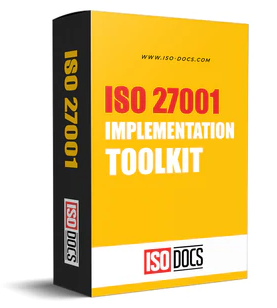Integrity: Safeguarding Accuracy and Trust in Information Security?
Introduction
The term integrity is often distorted when it comes to the information security context. Most people equate integrity only with honesty, but when reviewing ISO 27001, integrity is more related to maintaining the accuracy, completeness, and reliability of information. Integrity, Confidentiality, and Availability are the three pillars of the CIA triad that consist of the foundation of ISO 27001 and modern information security practices. Without integrity, even confidential information would be valueless due to inaccuracy, corruption, or manipulation.

What Is Integrity?
Integrity in Information Security means defending data against unwanted changes and guaranteeing its reliability, homogeneity, and correctness during its lifetime. Yet another one of the three core pillars of the CIA Triad (Confidentiality, Integrity, Availability) following ISO 27001.
Integrity further guarantees that all data is reliable and unaltered whether it is such as a financial record, a patient health record, a legal agreement or business critical database. It is also not limited to electronic systems and databases but includes one of those physical documents and records that organizations rely upon on a going ending basis for decision making.
Why Integrity Matters?
Given the dependency of organizations on data, if it is found that data are false or twisted, it may lead to dire business, financial and compliance implications. Good integrity practices maintain the truth and trustworthiness of data across all operations.
o Decision Support- Meaningful decisions by leaders and managers are often based on consistent data. Any compromise in integrity can mean that bad strategies, financial losses, or missed opportunities might happen as a result.
o Fraud Prevention-entails that integrity controls would decrease the possibility of outside changes, insider threats, it saves the organization from fraudulent cases.
o Compliance- It is required that ISO 27001, GDPR, HIPAA, and SOX-compliant organizations maintain reliable and true data. Not following this might put them in penalty or legal consequences for non-compliance.
o Supports Business Continuity- Accurate and intact records provide seamless operation, offer reliable audits, and ease disruption during crises or legal issues.
Key Principles Of Integrity
Integrity protection has preventative measures and well-defined processes. The core principles include the following:
1. Accuracy
- Information is accurate and free from errors.
- Validation checks should be in place as data enter the systems.
2. Consistency
- Data should remain consistent across different platforms and different storage systems.
- Synchronization control assures no discrepancies.
3. Authorization
- Only authorized people will be able to change critical data.
- Accountable through digital signatures/approval workflows.
4. Validation
- A periodic review validates that records are unaltered and accurate.
- Hashing and checksums are reliable means of checking data integrity.
Implementation Of Integrity In ISO 27001
Maintaining integrity is a structural requirement for organizations working toward ISO 27001 compliance, including key implementation steps.
1. Risk Assessment
- Identify the information that is subject to modification.
- Evaluate risks from external attacks, insider threats.
2. Change Management
- Structured processes for changing the systems or data.
- Version control of documents and software.
3. Audit Trails & Monitoring
- Record all changes to the information created.
- Monitor logs to detect suspicious or unauthorized activity.
4. Segregation of Duties
- Avoid conflict of interest.
- The person who approves a transaction shall not be the one who processes it.
ISO 27001 Controls For Maintaining Integrity
Annex A contains controls within ISO 27001 that help directly in maintaining integrity for the information.
1. Access Control (A.9)
- Restricts the access to edit, modify or delete information.
- According to the principles like least privilege and segregation of duties.
2. Cryptographic Controls (A.10)
- Digital signature guarantees authenticity for data.
- Hashing implies that files will not be altered while in transfer.
3. Backup and Recovery (A.12)
- Backup regularly guarantees recovery of data in the correct state.
- It ensures recovery from accidental deletion or corruption.
4. Backup and Recovery (A.12)
Regular backup ensures that data can be recovered into the right shape. It helps recover from accidental deletion or corruption.
5. Monitoring and Logging (A.12, A.16)
All changed data and activity performed by a user are traced. It is enough for determining unauthoritative modification.
Conclusion
The three fundamental pillars in the CIA triad for information security include integrity. Secrecy is ensured by confidentiality, while availability guarantees that integrity means data permanence, accuracy, reliability, and trustworthiness. By using strong ISO 27001 integrity controls such as access restrictions, hashing, audit trails, and change management, organizations will effectively help prevent manipulation and reduce compliance risks while engendering trust to last with the stakeholders.


